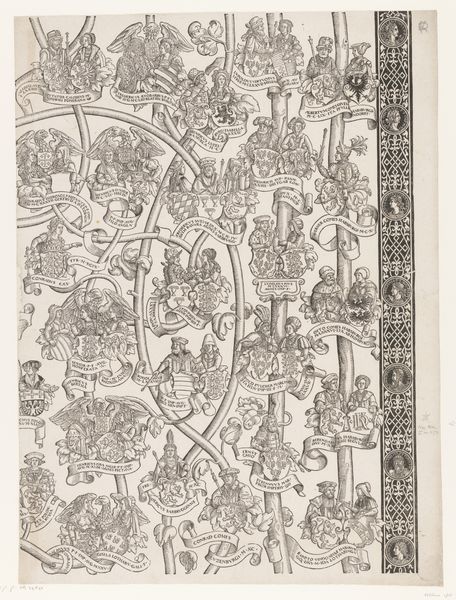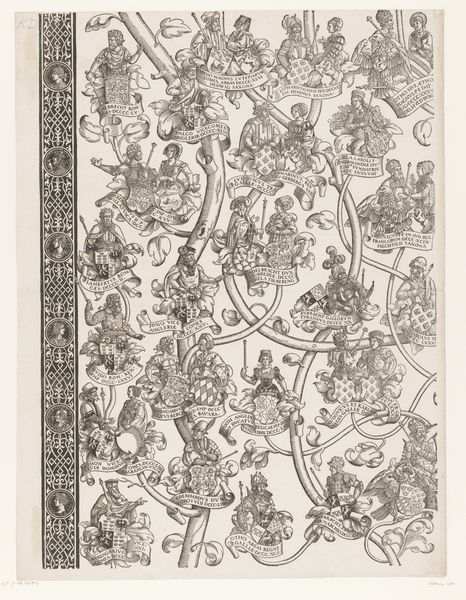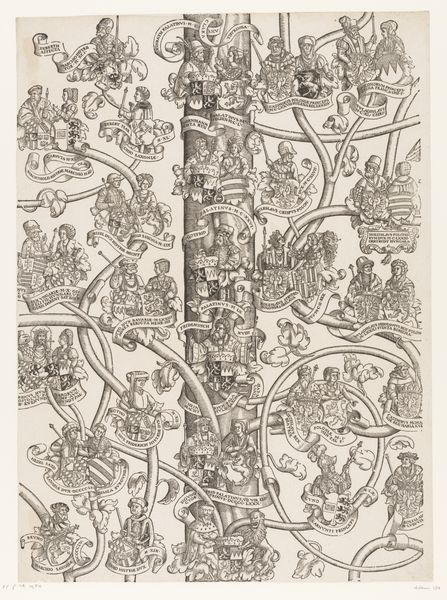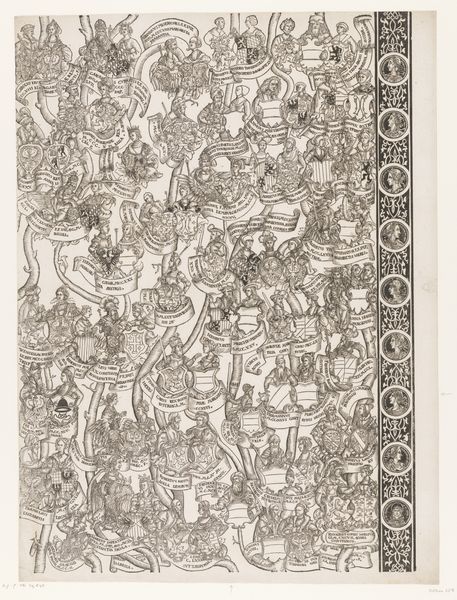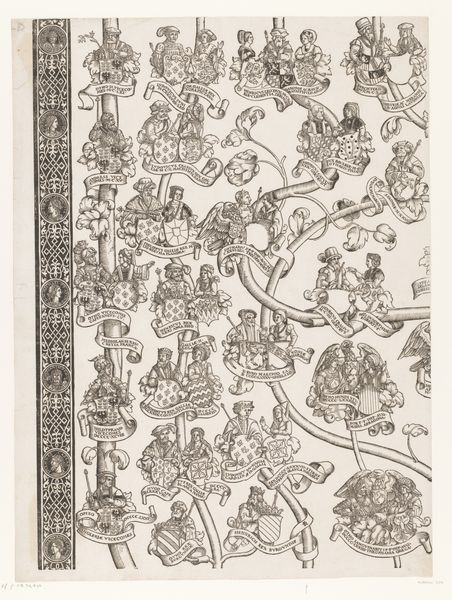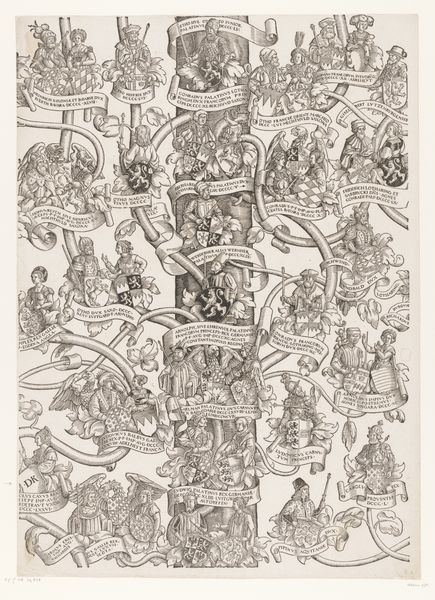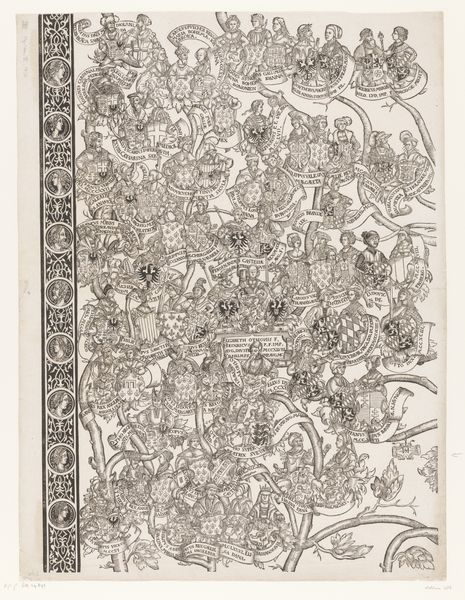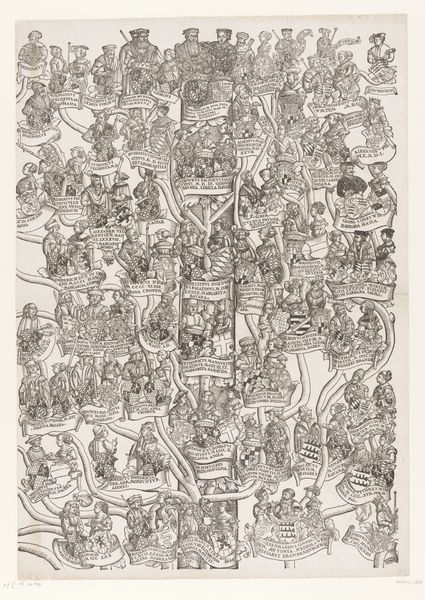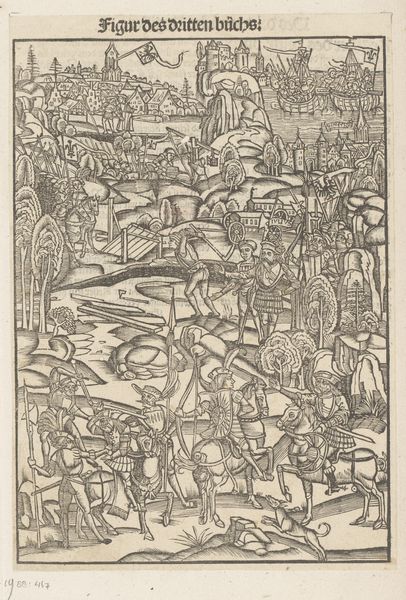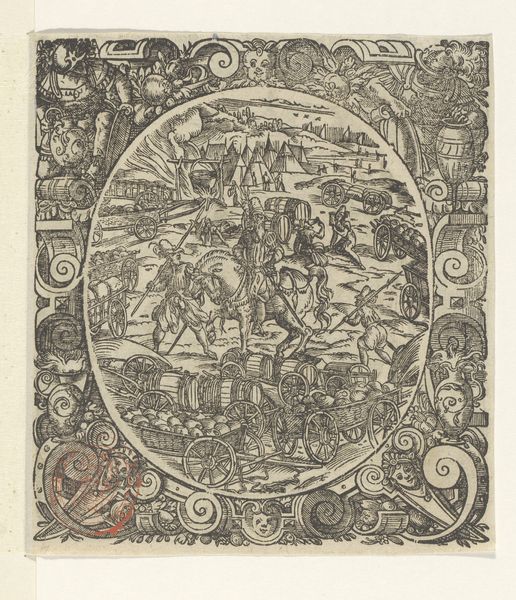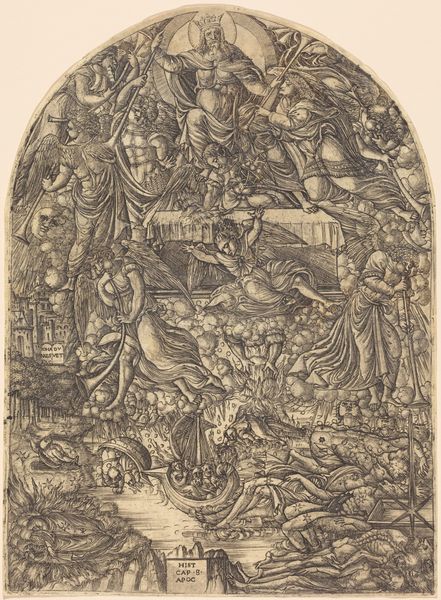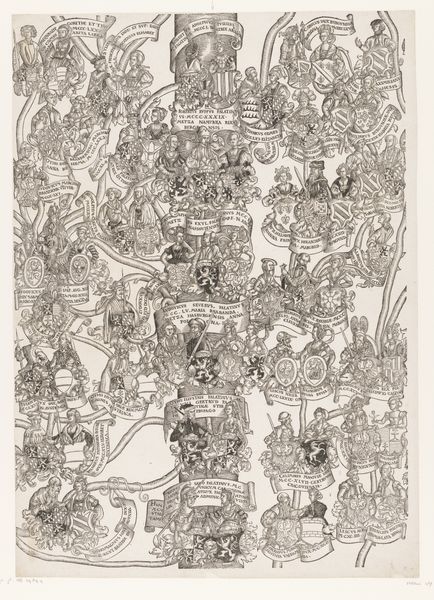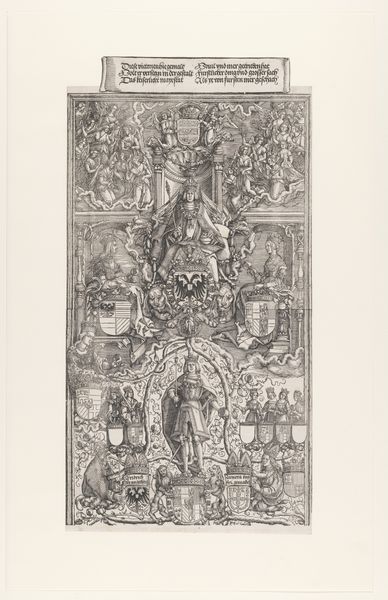
Stamboom van Frederik en Ottheinrich van Palts-Neuburg (plaat 12) 1535 - 1594
0:00
0:00
jakobclauser
Rijksmuseum
drawing, print, paper, ink, engraving
#
drawing
#
pen drawing
# print
#
paper
#
ink line art
#
11_renaissance
#
ink
#
engraving
Dimensions: height 616 mm, width 444 mm
Copyright: Rijks Museum: Open Domain
Editor: We're looking at a print titled "Stamboom van Frederik en Ottheinrich van Palts-Neuburg (plaat 12)", dating from 1535 to 1594, attributed to Jakob Clauser. It's rendered in ink on paper, using engraving and pen drawing. The density of the linework and the sheer amount of detail are quite striking. What’s your read on this, what's catching your eye? Curator: It is indeed visually dense. My attention is drawn to the formal structure. Note how the composition hinges on a network of interlaced lines, visually articulating a genealogy. Observe the artist's strategic deployment of ink. It creates depth and hierarchy in representing these figures. What visual relationships emerge as you analyze the compositional elements? Editor: Well, the lines connect figures to coats of arms, placing importance on family ties, so I see symbolic representation within this complex composition. The figures at the top seem grander, but maybe that's because they are more complete. The portraits along the right have intricate decorative patterns too. How does the pattern inform its overall impact? Curator: The bordering patterns are visually rhythmic, providing an edge. This framing not only contains the genealogical information but also reinforces the sense of order and control inherent in such displays of lineage. I am also interested in how line thickness differs. It contributes to a dynamic interplay between positive and negative space, does it not? Editor: I can see that. Thinking about the overall structure, this really does portray power in a visually constructed manner. Thanks for pointing out the different values in the marks; now, I am appreciating the artistry beyond just the historical value. Curator: Indeed. By attending to these elements, we recognize the piece as more than just a historical record; it’s a sophisticated exercise in visual rhetoric and formal design. I learned something from your comments on historical value as a kind of power.
Comments
No comments
Be the first to comment and join the conversation on the ultimate creative platform.
